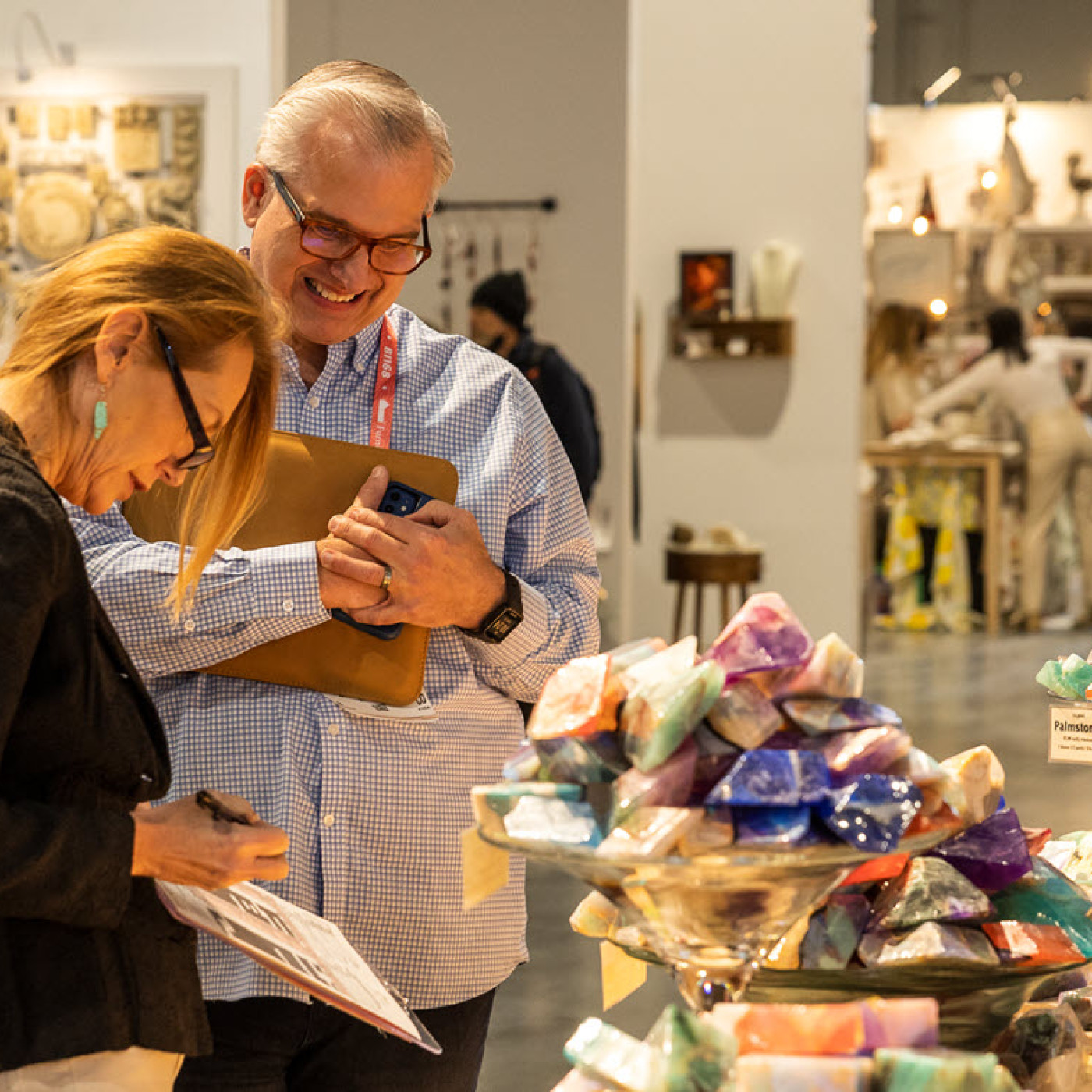Who Wants More Customers?

That will be almost every maker who wholesales their handmade goods! New customers are a critical factor in your business success for several reasons. First, that is how you grow your business and increase your income. In addition, you will always need to replace customers who close their business or change their inventory choices.
In this column, I am going to look at some specific ways you can grow your customer base.
However, before looking at specific strategies, it is critical that you do an internal examination of your current inventory, pricing, and marketing. Looking at your inventory, are there items you think should be altered or even eliminated?
And your pricing — are there some items that are unprofitable for you? Or are there some items you think your customers are avoiding because of the high price?
Finally, do you have a concrete, in-writing marketing plan you regularly follow? Are your marketing materials up-to-date and attractive?
If you have a few critical issues with any of these, now is the time to fix them. Paying close attention to your inventory, pricing, and marketing is a key component to winning new customers. So, put on your customer thinking cap and see what changes you need to make internally to increase your sales.
Taking a close look at your website is an excellent first step. Is it up-to-date and complete? Does the retailer know you want and welcome wholesale orders? Make this invitation obvious and easy to access. You can have a separate password-protected wholesale area complete with an order and payment system.
If your products are on a wholesale platform like Faire or IndieMe, make sure you have an obvious link to take retailers directly to your on-site store. Wherever you mention wholesale on your site, put a clear call to action. “We have a great introductory package.” “Our NEW bracelet collection is a bestseller!”
Make your information sound enticing and worth their time to evaluate it. Most importantly, have an obvious “click here” that takes them to a great visual and succinct copy that makes it easy to order.
One final recommendation for your website is to include a list of your current retailers. This gives you two advantages. First it might help a customer who wants to see your work in person. When they find it in a shop, it is making a sale for you and encouraging that retailer to keep your work in stock.
Also, a great number of store owners and buyers will regularly cruise other retailers’ sites. When your company is on the artist list, they might be so impressed they will want to become a retailer who stocks your products on their shelves.
When you did your inventory analysis, did you discover an item whose popularity was waning? If so, this might be a suitable time to revise or replace it.
To clear this inventory, it is a good time to send an email to every customer with a “last chance” price reduction offer. Oh, and at the same time, be working on its newer, more exciting version with size, color, and design changes. That will provide a new product for you to ballyhoo in the coming months.
There is no word in the retailer’s dictionary more important than “new!” Believe me, I was a retailer who had regular customers ask, “What’s new?” as they walked in the front door.
More than once, we sold items right out of their shipping boxes! So, never stop making new and making a big deal of it!
One last point is to use new to your advantage. If you have some products where price seems to be the issue, see if you can retire them and then reconfigure a similar product that uses less material, fewer colors, higher design, easier packaging — in other words, a new product you can offer at a slightly lower price but at a higher margin for your bottom line.

While I seldom advise a maker to consider consigning their goods, there are a couple of exceptions. The first is to visit a local retail establishment that has a great reputation and where you believe your product would be a good fit.
In most cases, make an appointment. Take along a few pieces of your line. Be friendly, brief, and thankful for the opportunity. If you are successful, this gives you some bragging rights to be in such a fine store.
The second consignment idea might be with a retailer who already carries your work. If they are consistently ordering your moderately priced pieces, you might offer to give them one grander item on consignment.
We did that with a high-end glass blower. When we placed a substantial order with payment, he shipped us one large piece retailing close to $2,000.
As soon as we sold it, we paid him, and he sent us another piece, usually in a different color. This worked well for both of us. We saved the up-front cash and over time, he sold a lot of those gorgeous pieces to our customers.
Of course, the easiest way to meet hundreds of interested customers is by participating in a trade show. You are renting a small space, displaying your products over several days, and meeting store owners and buyers you want to stock your inventory.
I have written columns with endless details and suggestions, but the most basic is checking out which show is a good fit for your product. If possible, walk some shows and talk to the exhibitors there.
If it is a large show, check out the sections that best fit both your product and your budget. Analyze all the expenses, because in addition to the booth fee, there is transportation, housing, meals, parking, and display and marketing materials. Also, keep in mind you need to do a show repeatedly to grow your following and provide significant income.
Some final trade show advice: stay in your booth and off your phone. Smile and say hi to people walking by. If they come into your booth, have a quick and easy opening line such as, “All my jewelry is sterling silver and handmade in my studio in Topeka.”
Have a line sheet, a minimum order, and get some information about their business. Whether or not they place an order, get their business card. Just that they stopped and looked means they were interested in your product, and you should add them to your marketing list.

Which brings us to your marketing. It is imperative that you stay in touch with your customers through regular emails and frequent social media posts.
Ensure your efforts are noticed with great photos. Make your caption and copy short and compelling. When possible, put a link in your post that takes your customer to the right place.
Even if you have been taking good photographs of your products, consider having a professional take a few glamour shots of your favorite items. You can use these in so many ways — in your marketing materials, artist cards, and booth displays at shows. Most importantly, you have something that might generate interest in local and national media.
Public relations are often overlooked by busy artists. However, you have opportunities in local, statewide, and even national media to get placement in gift guides, tourist publications, and design issues.
Keep in mind that many publications work months in advance. So, if you are looking for a mention in a Christmas Gift Guide, the time to get that message out is July. Use that wonderful professional photo, with all your contact info and a simple, compelling message.
Do not begin your public relations efforts with the goal of immediately becoming one of “Oprah’s Favorite Things.” But that could happen as you grow more confident and successful reaching out to local and regional publications.
Keep in mind the suggestions made earlier. Develop new and exciting products, have great photos of them, and implement an aggressive marketing plan.
Elevate your website to be a hardworking sales tool and use frequent emails and social media posts to excite your customers. This includes all your customers — the ones you have not heard from recently, your frequent retailers, and all those new folks you just met at your latest trade show.
Diane Sulg is executive director of CRAFT and founder and co-chair of American Craft Week (ACW). She is a handmade advocate who provides valuable information in her one-day seminars titled “All About Wholesale” at wholesale shows throughout the United States. Diane is the former owner of Maddi’s Gallery, in Charlotte and Huntersville, North Carolina.
